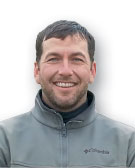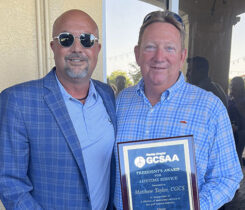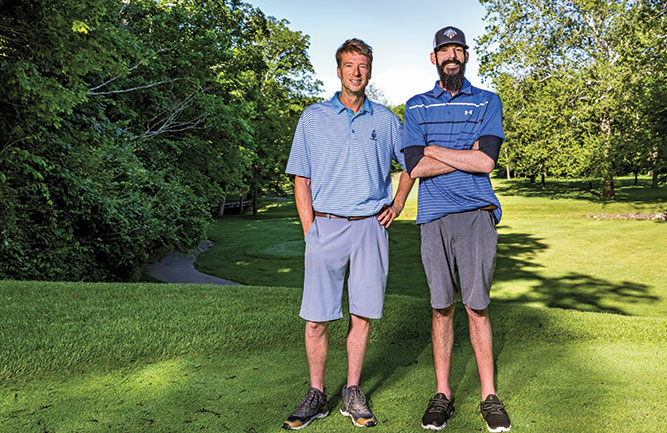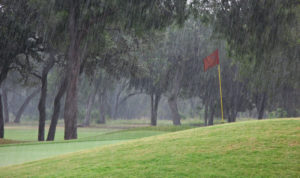Give them what they want: Accept golf’s changes
 If Old Tom Morris, Harry Vardon and Bobby Jones could see the way golf has changed over the years, they probably would collectively roll over in their graves. Everything from how the game is played to who is playing it has changed dramatically since these men roamed the links in their respective eras.
If Old Tom Morris, Harry Vardon and Bobby Jones could see the way golf has changed over the years, they probably would collectively roll over in their graves. Everything from how the game is played to who is playing it has changed dramatically since these men roamed the links in their respective eras.
We don’t think twice when we see a golfer pull out a driver with a graphite shaft and a Yugo-sized head. Golfers wearing absurd shirts that they haven’t even bothered to tuck into their cargo shorts is a common sight. Walking golf is now the exception rather than the rule.
Gone are the days of featheries and hickory shafts, of sharply dressed foursomes striding down the fairway and of countless other traditions that have been considered hallmarks of the game throughout its evolution. For better or worse — depending on your perspective — things change.
Arguably the most tradition-bound (obsessed?) game in the world has changed dramatically through the years and has been dragged into the next era — no doubt kicking and screaming at times — as a result of technological improvements, changes in societal and cultural norms and the desires of the golfing public. That’s undoubtedly why golf has managed to survive for as long as it has.
Through all these changes the game has survived largely intact.
And yet, for all the changes that inevitably occur to an institution that is several hundred years old, it’s amazing to see the amount of hand-wringing that accompanies any perceived “threat” to the grand old traditions of yore.
According to the National Golf Foundation’s Golf Participation in the U.S., 2010-2020 report, the golf boom of the 1960s was fueled primarily by the fact that the majority of new courses were affordable public facilities. Golf was now available to the masses in a way that it never was before, and the increase in participation significantly outpaced every decade (other than the 1980s) since then, including the boom of the 1990s.
According to the NGF analysis the reason the participation increase of the ’60s was almost twice that of the ’90s was affordability, and ultimately, accessibility. The boom of the ’90s mainly was driven by the construction of private and upscale public facilities. Yet the booms of both decades had one thing in common: they gave the golfing public what they wanted at the time.
That’s what we need to do now — give the people what they want. I still want to have a job in 20 years, so if people want in-cart WiFi and speakers, then so be it. If an idea like Topgolf gets Millennials interested in the game, more power to them. I’m as much of a golf traditionalist as the next guy, but I also realize that every generation wants to put its own stamp on the institutions they grow up with. Golf is no exception.
We should be more interested in attracting people to the game than in dogmatically upholding some esoteric set of traditions that seemingly are alienating entire groups of potential golfers.
Are manhole-sized cups or any of the alternative forms of golf the future of the game? I doubt it. They’re likely passing fads that we’ll all laugh about 10 years from now (actually I doubt anyone will ever laugh about replacing 8-inch plugs) so it’s hard to believe that they truly threaten the long-term integrity of golf. I’m not saying we should just run roughshod over the game, but what’s the harm in doing some things a little differently if it gets people interested in the game again?
The bottom line is that golf will survive. It has for centuries and will likely carry on for centuries to come. But in order to thrive again, golf needs to continue to be open to change because resistance to it can be a risky a proposition.












